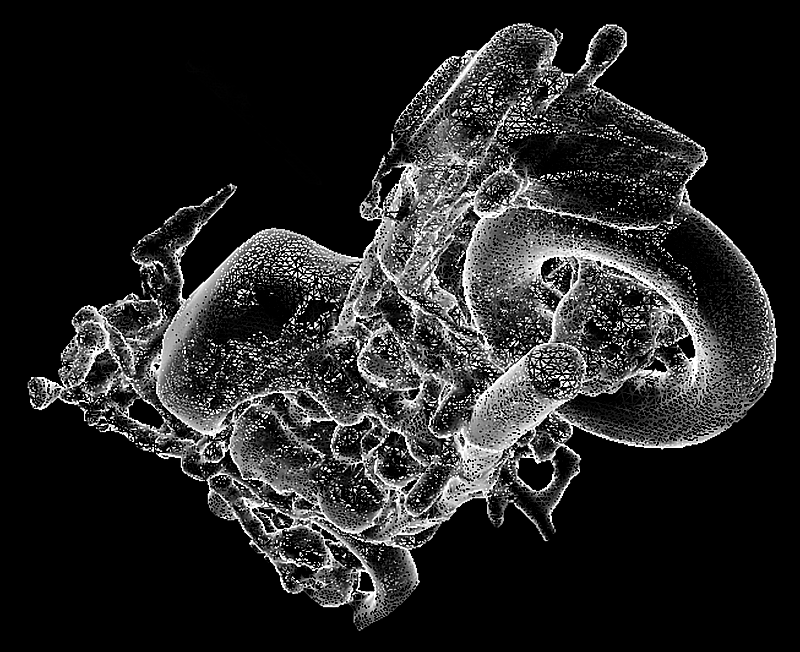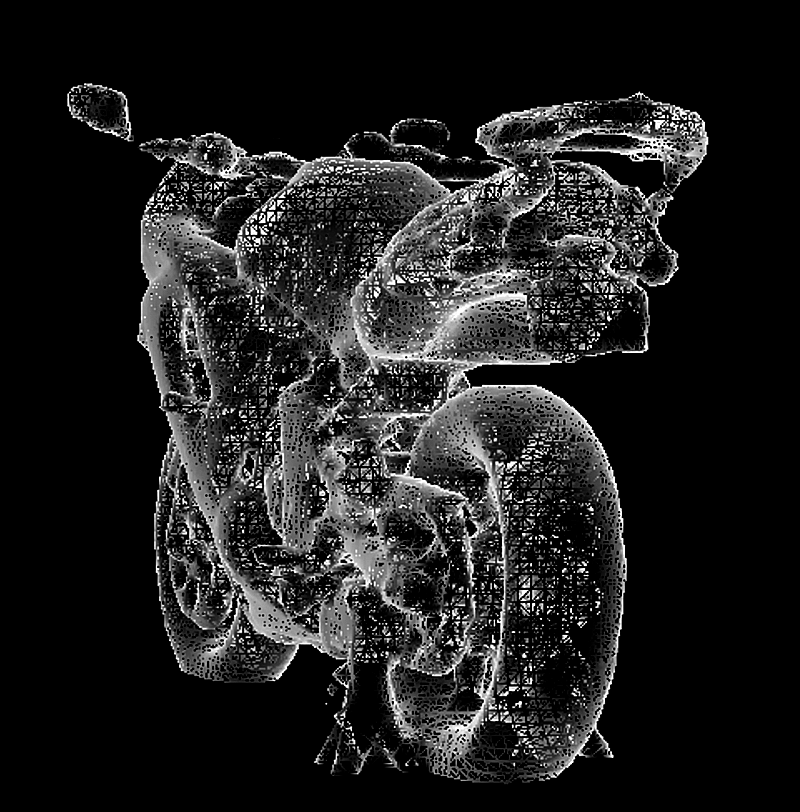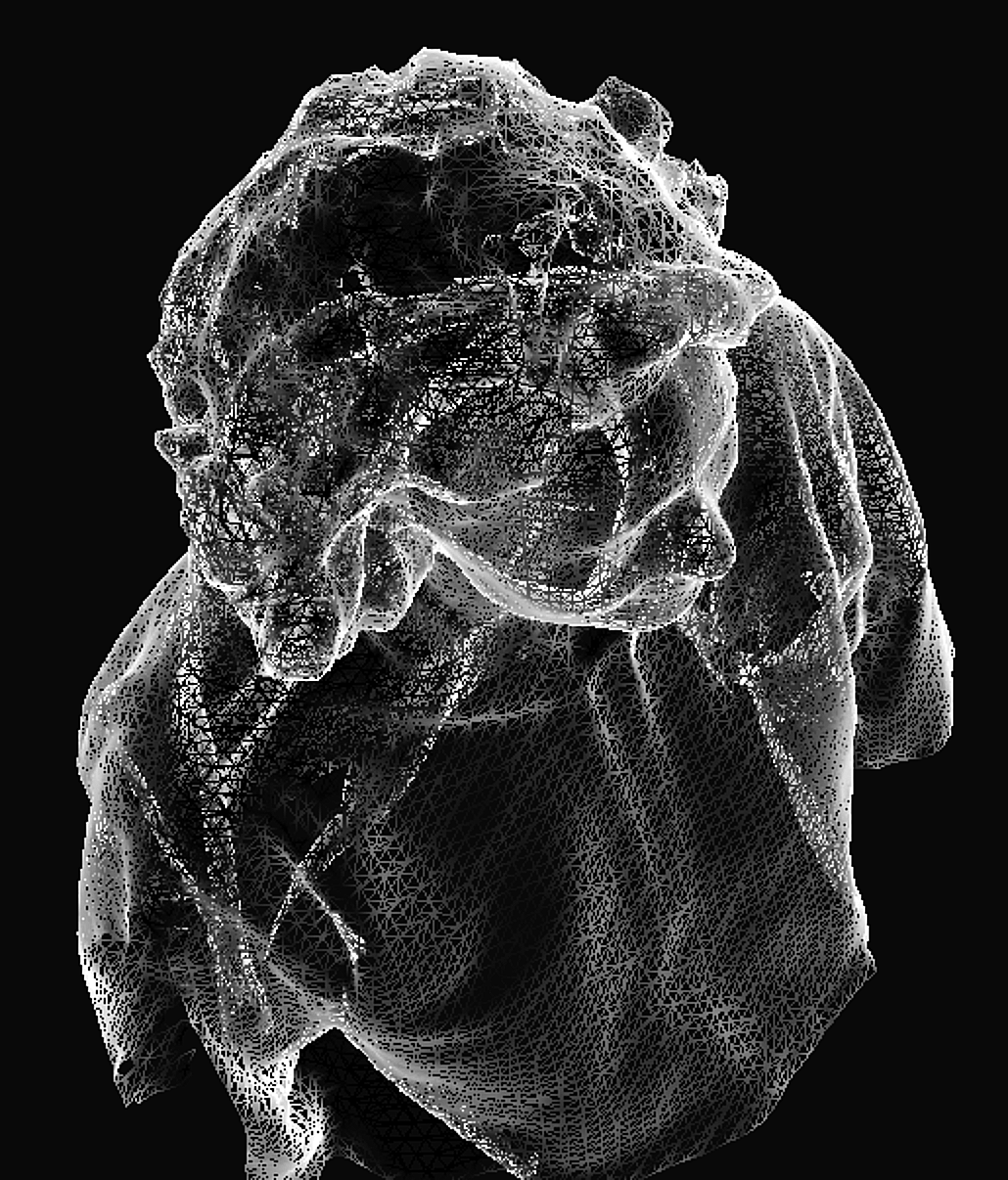I got a Structure 3d scanner this week at work. We’re using it there for all sorts of educational activities, but I find myself painting the various Kawasaki products in my garage.
This thing costs about $350 bucks and straps on to an ipad. You walk around your target ‘painting’ it on the ipad screen (it looks like you’re covering it in clay) and then you’re done. Any of these motorcycle models took about a minute of walking around the bike…
It didn’t take me long to get some remarkably detailed images of the Concours…
Because it’s so easy to paint an object and create a 3d model out of it, you tend to try all sorts of angles.
The scanner will also take a swing at rooms, though I’m not so good with them yet. This is an image of the garage. The Ninja is on the left, the Concours is further in on the right.
The file generated is basically a list of vertices connected by lines. The sensor measures distances and constructs a 3d mesh out of them. The result is a three dimensional image.
How could something like this be used?
You could scan a fairing or other part, get accurate geometry out of it and then modify it digitally before printing out a replacement.
I think I’m about five years away from being able to 3d print my own digitally modelled custom fairings for any bike. The hold up right now is a 3d printer big enough to manage large prints. What I’d really like is a high resolution Terminator 2 style Formlabs printer like the one below that’ll print up to fairing sized pieces…





